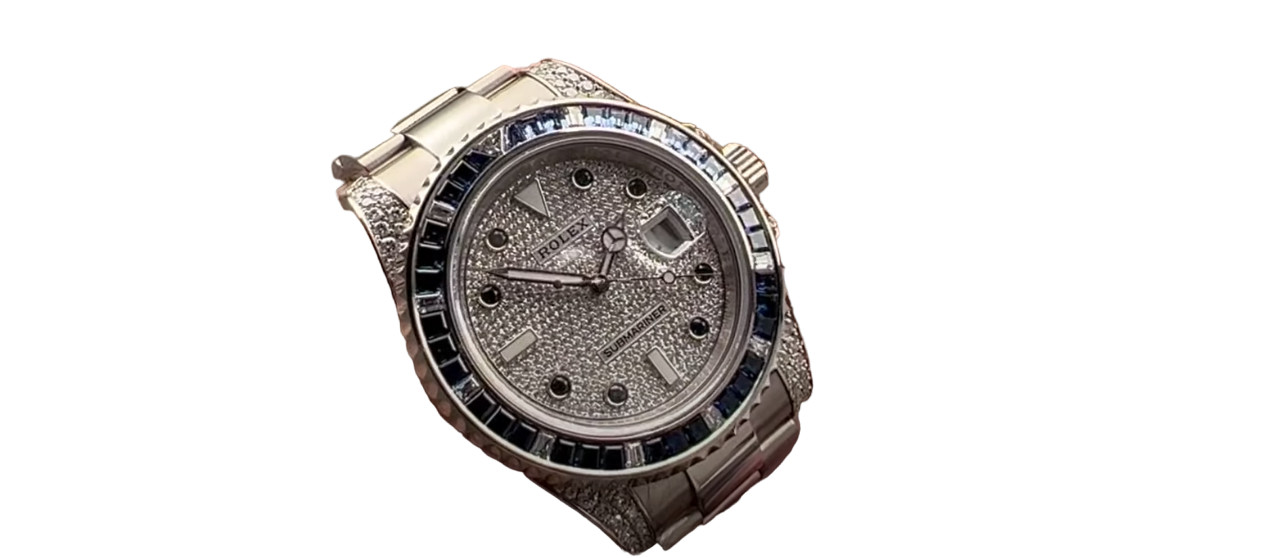The Rolex GMT-Master is widely sought-after on the secondary market for its iconic, purpose-driven design set. It was initially developed for professional pilots and other avid globetrotters, featuring a 24-hour bezel and a GMT hand on the dial. While these features were intended for dual timekeeping, they now give the GMT-Master its distinctive tool watch aesthetic that collectors of all professions and lifestyles adore. The GMT-Master is a pillar of the Rolex catalog, coming to market in the 1950s and continuing production today under the GMT-Master II lineup. Vintage examples of the original GMT-Master are some of the most desirable Rolex watches on the market.
For this article, we’re going to showcase a truly exceptional edition of the GMT-Master 16750 with a rare and unusual Spider dial. Read on to learn more about what makes this vintage Rolex so special, including its history, features, and price.
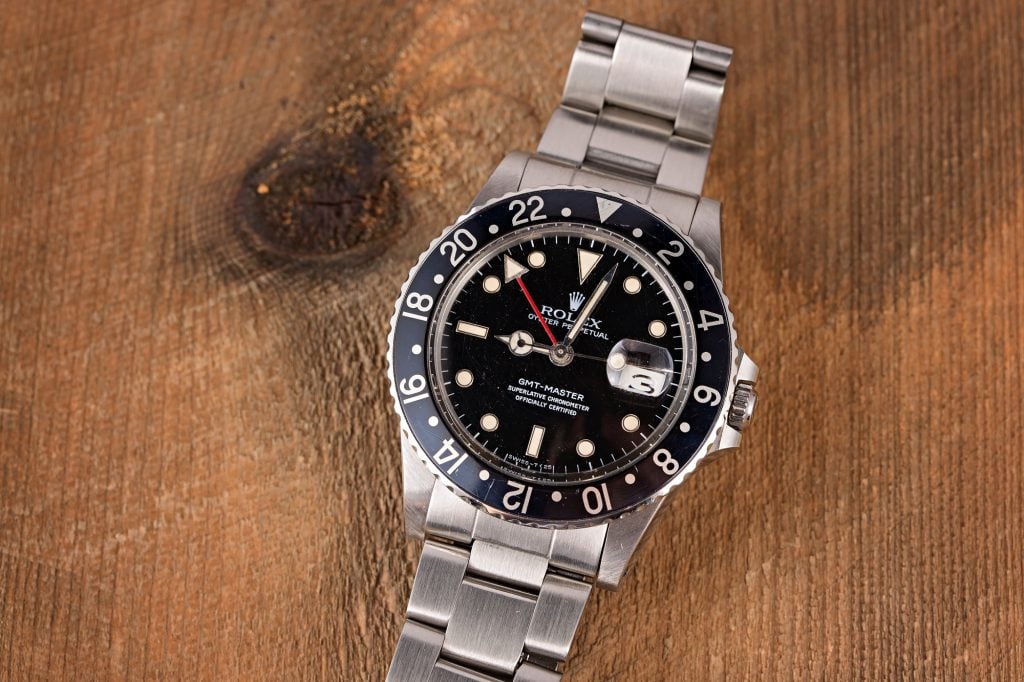
Rolex 16750 GMT-Master History
Rolex debuted the GMT-Master pilot’s watch in the 1950s. The first GMT reference 6542 was produced for few years before its successor, the ref. 1675, took its place around 1959. The inaugural model featured a two-tone bezel, now famously dubbed the “Pepsi,” to distinguish between day and night hours and a 24-hour scale for dual timekeeping. The very earliest ref. 6542 watches used Bakelite for the bezel. However, aluminum quickly replaced that material because it tended to crack very easily.
Rolex continued to use aluminum for the rest of the GMT-Master collection until Cerachrom was introduced in the 2000s alongside the 6-digit GMT-Master II. The reference 1675 introduced crown guards and an all-black bezel to the original Rolex GMT. Depending on the year it was released, the ref. 1675 also features either a glossy or matte dial. Rolex introduced the ref. 16750 next in 1981 and continued producing the model until the late 1980s. With this edition of the GMT-Master, the collection as we know it today started to take shape even more with a higher-beat movement and improved water resistance.
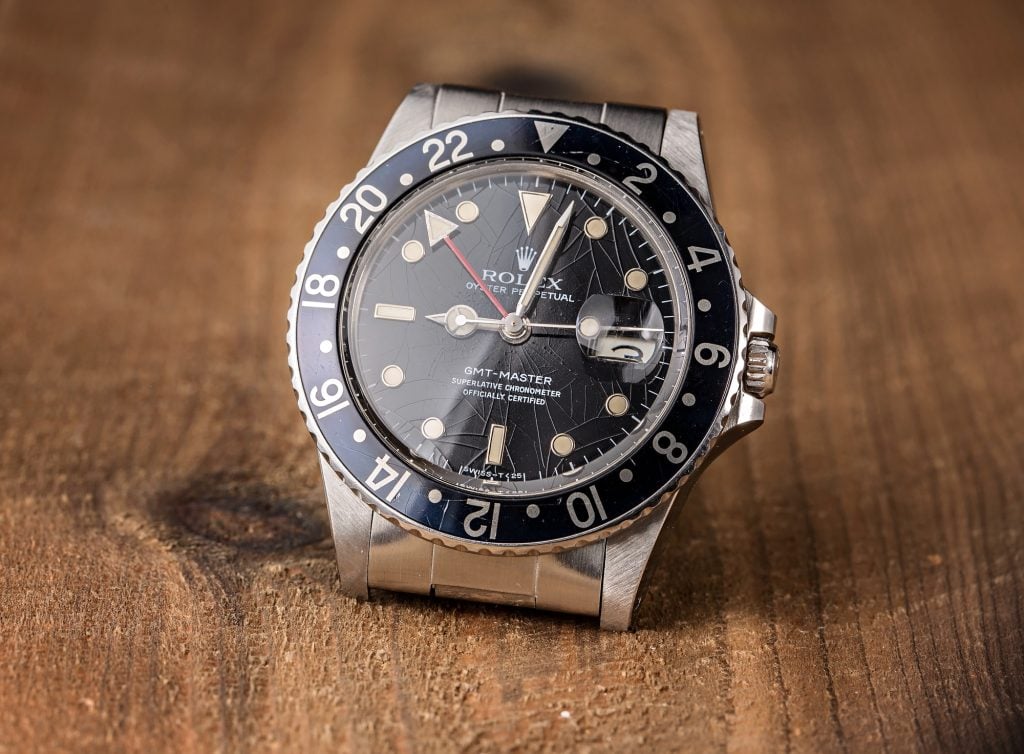
Rolex GMT-Master 16750 Movement
The reference 16750 features a then-new caliber 3075 Perpetual movement, replacing the caliber 1575 powering its 4-digit predecessor. The reference 16750 was the very first GMT-Master to utilize a 3000-series movement, marking a very significant time in GMT-Master history. The movement features a higher frequency of 28,800 bph compared to the caliber 1575’s 19,600 bph rating. It was also the first instance of a Quickset function within the GMT-Master collection.
With the Quickset, the wearer can adjust the date mechanism with a simple twist of the crown while in the second position instead of advancing the hour hand 24 hours for each day. The hacking seconds feature introduced to caliber 1575 in the early 1970s remains, which stops the seconds hand while the wearer sets the time. With the caliber 3075, the GMT-Master series became even more precise and convenient.
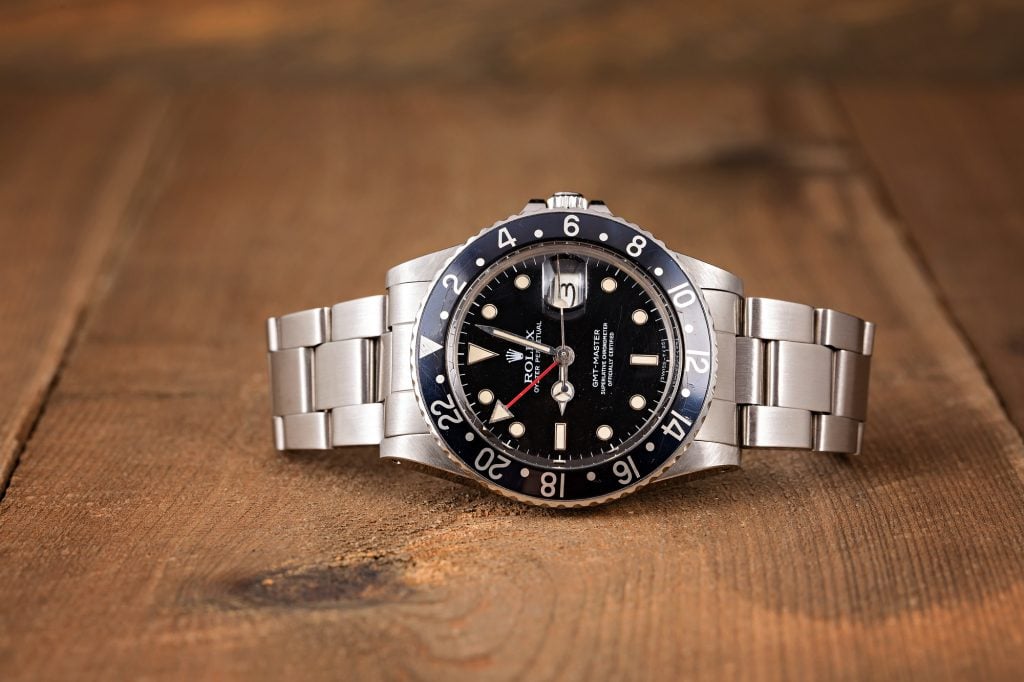
Other Key Features
Another notable improvement made to the series with the arrival of the ref. 16750 is the depth rating, which was increased from 50 meters to 100 meters. The watch also features an older-style acrylic crystal – sapphire made its GMT debut via the first GMT-Master II ref. 16760 in 1982.
Rolex produced the ref. 16750 on both the 3-link Oyster and 5-link Jubilee bracelets and used Tritium for the luminescent material on the dial. Lastly, the bezel was made with either a red and blue Pepsi insert or all-black, which bears a very striking resemblance to the stainless steel Submariner produced during the same era.
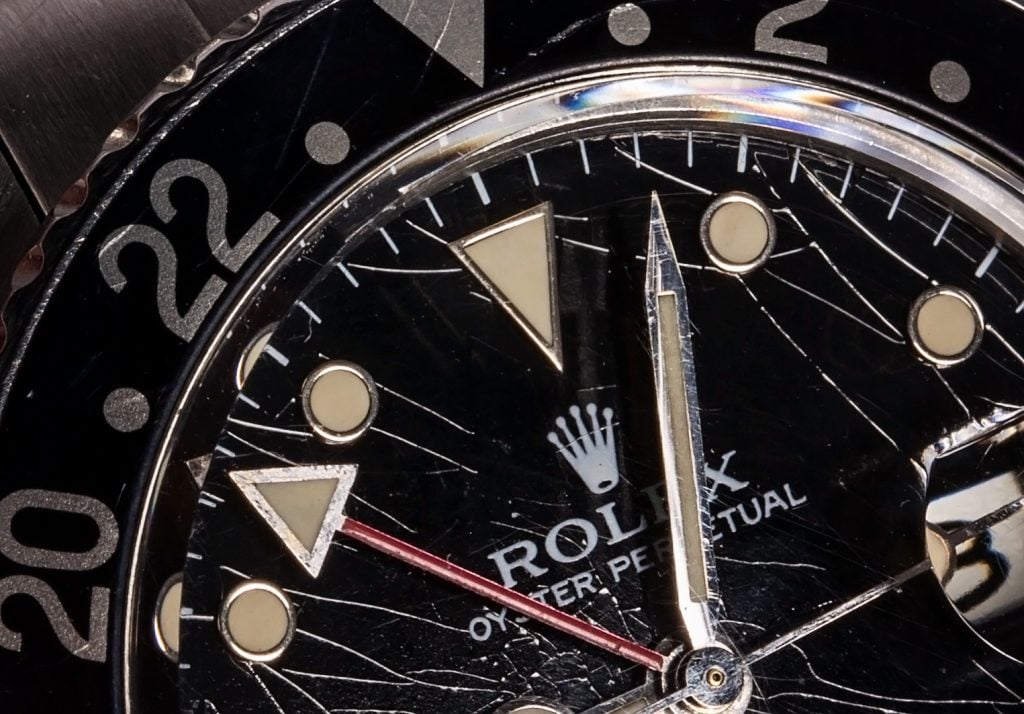
Rolex Spider Dial
Here is where things get interesting. Rolex initially released the ref. 16750 with a matte dial and painted hour markers. This dial variation is rarer than the glossy dial GMTs, especially considering that many of the original matte dials have long since been replaced during routine servicing. Rolex switched to glossy dials decorated with white gold-trimmed applied hour markers around the mid-1980s. Some of the glossy dials made by Rolex during this time developed a defect in the lacquer, causing it to crack, a process known in watch collecting circles as “crazing.” These dials are now affectionately referred to as “Spider Dials” and are highly collectible since many were replaced by Rolex during routine repairs and service.
The “crazing” exhibited on spider dials is comprised of fine fractures in the glossy lacquer only. If you look at the dial closely, you’ll notice that it does not affect the white text. It might be difficult to see at first, but the spidering in the gloss is the most visible when the dial is tilted and looked at under a bright light. It didn’t take Rolex very long to recognize this flaw, and the original lacquer material was eventually replaced.
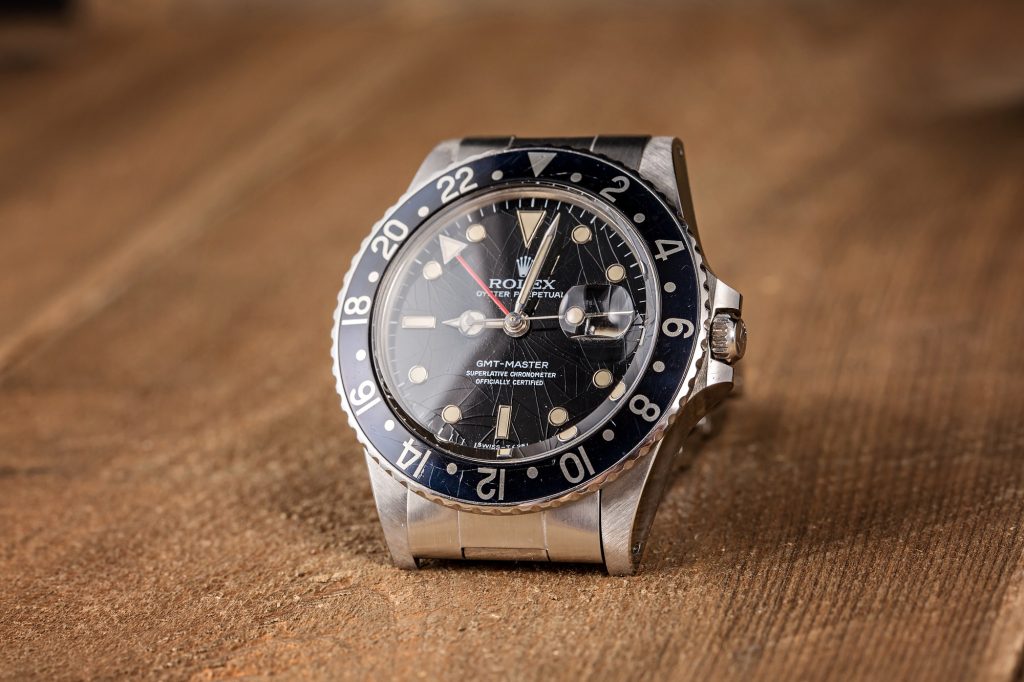
Is The Rolex Spider Dial GMT-Master 16750 Valuable?
Rolex has notoriously high standards for quality, which meant that the company couldn’t, in good consciousness, allow the watches sporting the spider dials to leave their servicing locations without a new, immaculate glossy dial. For some, this is good news because not every Rolex collector is a fan of the defect. However, some see it as a quirky and rare representation of one of the few times that Rolex made a mistake on a vital component of one of their most iconic timepieces.
For this reason, some collectors will pay a premium over “normal” ref. 16750s for the Spider dial. At the same time, it’s still entirely possible to find this rare dial for around the same price as those that don’t have it. The GMT-Master 16750 itself is considered a very prized collector’s item because it had a relatively short-lived production run. It often commands between $13k and $16k on the secondary market. GMT-Master’s outfitted with a Spider dial can trade hands for as much as $16k to $17k.
Either way, we can all agree that the Spider Dial Rolex 16750 is a fascinating watch to examine and wear. What do you think of the Spider Dial? Do you love it or hate it? Let us know in the comments below.





